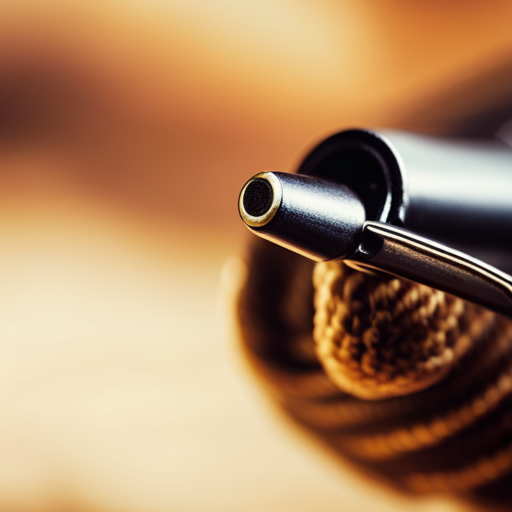In the world of fly fishing, the subtle nuances of hook design can make a significant difference in performance. The juxtaposition of hook anatomy, from shape to size and material, yields varying impacts on fly performance. Understanding these intricacies is crucial for anglers seeking to optimize their fishing experience.
This article delves into the effects of different hook types, offering insights into their influence on fly performance.
Understanding Hook Anatomy
The anatomy of a fly hook plays a crucial role in determining its performance and effectiveness in fly fishing. Fly design and fishing techniques are intimately linked to hook anatomy.
The design of the fly hook, including its bend, shank, gap, and eye, influences how the fly moves through the water and how it sets in the fish’s mouth. Different fishing techniques, such as dry fly fishing, nymphing, or streamer fishing, require different hook designs to optimize performance.
The bend of the hook determines how well the fly imitates the natural movement of an insect or baitfish. For instance, a wide gap hook provides better hooking potential for patterns with bulky bodies, while a narrower gap may be more suitable for smaller, slimmer flies.
The shank length affects the balance and appearance of the fly, which is essential for achieving a natural presentation. Additionally, the eye of the hook influences how the fly sits in the water and how it can be manipulated by the angler.
Understanding these intricacies of hook anatomy is vital for fly fishers aiming to select the most appropriate hook for specific fly designs and fishing techniques.
Effects of Hook Shape
Analyzing the influence of hook shape on fly performance reveals crucial insights for fly fishers aiming to optimize their fishing techniques and fly designs. The shape of the hook directly impacts its ability to penetrate the fish’s mouth and maintain a secure hold, influencing the overall success of the angler.
Different hook shapes can elicit varied responses from fish, affecting their behavior towards the fly. For instance, a wide gap hook may result in better hookups due to its enhanced ability to secure a hold when a fish strikes, whereas a narrow gap hook may be more effective in certain scenarios, particularly with finicky or line-shy fish.
Environmental factors such as water conditions, temperature, and the presence of natural prey can also influence the effectiveness of hook shape. Understanding the effects of hook shape on fly performance is essential for fly fishers to adapt their tactics based on fish behavior and environmental factors, ultimately enhancing their overall success on the water.
Impact of Hook Size
Understanding how hook size impacts fly performance is essential for anglers seeking to optimize their fishing techniques and adapt to varying environmental conditions and fish behavior. Size variation in hooks can significantly influence the overall performance of a fly. Larger hooks provide greater strength and are more suitable for targeting larger fish species, while smaller hooks offer increased stealth and are ideal for catching smaller, more cautious fish.
When comparing hook sizes, anglers should consider the impact on casting distance, presentation, and hooking efficiency. Smaller hooks may offer better presentation due to their reduced visibility, but they may also compromise hooking efficiency, especially with larger fish. On the other hand, larger hooks may provide better hooking capabilities but could potentially deter fish in clear water conditions. Therefore, a performance comparison between different hook sizes is crucial for anglers to determine the most suitable option for their specific fishing scenario. This analysis enables anglers to adapt their fly choices based on the targeted fish species and the prevailing environmental conditions.
Transitioning into the subsequent section, the importance of hook eye placement further contributes to the overall effectiveness of the fly.
Importance of Hook Eye Placement
Hook eye placement significantly impacts the overall effectiveness and performance of a fly, particularly in relation to the hook size and the targeted fish species. The orientation of the hook eye influences the fly’s action in the water, affecting its ability to mimic natural prey and attract fish. Additionally, proper eye placement contributes to better drift control, ensuring that the fly moves naturally with the current, ultimately increasing its appeal to the fish.
Here are four key factors to consider when evaluating the importance of hook eye placement:
-
Alignment with Hook Shank: The eye orientation should align with the hook shank to ensure the fly moves naturally and remains balanced in the water.
-
Minimization of Twisting: Proper eye placement reduces the likelihood of the fly twisting during casting or retrieval, maintaining its lifelike presentation.
-
Enhanced Durability: Correct eye placement minimizes strain on the material, enhancing the overall durability of the fly.
-
Improved Hooking Efficiency: Optimal eye placement increases the hooking efficiency, ensuring a better chance of a secure hookset when a fish strikes.
Understanding the significance of hook eye placement sets the stage for evaluating the impact of hook shank length on fly performance.
Evaluation of Hook Shank Length
Examining the relationship between hook shank length and fly performance reveals critical insights into the dynamics of fly fishing. The shank strength is a key factor in hook design, as it directly influences the overall performance of the fly. A longer shank provides more leverage, allowing for a better hook set, especially when fishing with larger, heavier flies. Additionally, the length of the shank affects the fly’s profile and how it moves through the water. Longer shanks can alter the appearance and action of the fly, potentially making it more attractive to fish. However, it is crucial to consider the trade-off between shank length and the overall weight and balance of the fly. Furthermore, the shank strength plays a significant role in determining the hook’s ability to withstand the pressure exerted by a fish during a fight. Therefore, hook design must carefully consider the shank length to ensure the optimal balance between performance and durability. Understanding these aspects is essential for fly anglers seeking to maximize their success on the water.
Transitioning into the subsequent section about the influence of hook gap width, it is evident that the interplay between hook design and performance is multifaceted and warrants further exploration.
Influence of Hook Gap Width
The relationship between hook shank length and fly performance sets the stage for evaluating the influence of hook gap width on the effectiveness of different fly types. When considering the influence of hook gap width on fly design, several key points come to light:
-
Gap width influence: The gap width of a hook directly affects the way a fly is presented in the water. A wider gap can provide better hookups, especially for larger fish species, while a narrower gap may be more suitable for smaller, delicate flies.
-
Performance implications: The gap width choices impact the overall performance of the fly. A wider gap can allow for better penetration and hook setting, whereas a narrower gap may result in fewer successful hookups.
-
Consideration of fly design: The gap width must complement the overall design of the fly, taking into account factors such as the intended fish species, water conditions, and the specific behavior of the fly pattern.
-
Optimizing effectiveness: Careful consideration of gap width choices can enhance the overall effectiveness of the fly pattern, leading to improved hookups and successful catches.
Understanding the influence of hook gap width is crucial for optimizing fly performance. This knowledge paves the way for the subsequent section on considerations for hook material.
Considerations for Hook Material
When considering hook material, it is important to understand the impact it has on hook performance.
The weight and durability of the material are crucial factors to consider, as they can affect the overall performance of the fly.
Material Affects Hook Performance
An understanding of hook material is crucial for evaluating its impact on fly performance. The choice of material can significantly influence the effectiveness of a fly, impacting its durability, sharpness, and ability to penetrate the fish’s mouth. When considering hook material, the following factors should be taken into account:
-
Durability: Different materials have varying degrees of durability, affecting the hook’s lifespan and resistance to corrosion.
-
Sharpness: The material influences the hook’s ability to maintain a sharp point, which is crucial for effective hook sets and fish retention.
-
Weight: The weight of the material can impact the fly’s buoyancy and sink rate, influencing its presentation in the water.
-
Flexibility: The flexibility of the material can affect the hook’s ability to withstand pressure during the fight, impacting its overall performance.
Weight and Durability Matter
Weight and durability significantly impact the performance of hook material, influencing its longevity and resistance to corrosion. When considering hook material, corrosion resistance is crucial, especially for fishing in saltwater environments. Stainless steel and carbon steel hooks are popular choices due to their high resistance to corrosion.
Additionally, temperature tolerance is essential, as extreme temperatures can weaken or damage the material. For example, titanium hooks offer excellent temperature tolerance, making them suitable for various fishing conditions.
Anglers should prioritize hook materials with superior corrosion resistance and temperature tolerance to ensure the longevity and reliability of their fishing hooks, ultimately enhancing their overall fly performance.
Frequently Asked Questions
Can Different Hook Types Affect the Casting Distance and Accuracy of Fly Fishing?
Different hook types can significantly affect casting distance and accuracy in fly fishing. The choice of hook material and design influences performance. Additionally, casting techniques are impacted by the characteristics of different hook types, ultimately affecting overall fly fishing success.
How Does the Weight of Different Hook Types Impact the Sink Rate of Fly Patterns?
The weight of hook types significantly influences the sink rate of fly patterns. By carefully selecting hook types based on their weight, fly anglers can optimize the sink rate of their fly patterns to suit varying fishing conditions and target species.
Are Certain Hook Types Better Suited for Specific Types of Water Conditions, Such as Fast-Flowing Rivers or Still Lakes?
Certain hook types are better suited for specific water conditions. For fast-flowing rivers, durable hooks with strong penetration are ideal to withstand the force. In still lakes, hooks with excellent penetration may be more important.
Do Different Hook Types Have an Impact on the Hook-Up and Landing Percentages of Fish?
The impact of different hook types on hook-up and landing percentages of fish is a critical aspect of fly fishing. Factors such as hook material, size, durability, and barb design play a pivotal role in determining their effectiveness.
How Do Different Hook Types Perform When Targeting Different Species of Fish, Such as Trout, Bass, or Saltwater Gamefish?
When considering trout fishing, hook performance is crucial to successfully landing fish. Similarly, for saltwater gamefish, hook selection plays a vital role in achieving desired results. Understanding the specific needs of each species is essential.
Conclusion
In conclusion, the various hook types have a significant impact on fly performance. Just as a conductor’s choice of baton can greatly influence the orchestra’s performance, the hook shape, size, eye placement, shank length, gap width, and material all play a crucial role in the success of fly fishing.
Understanding the anatomy and effects of different hook types is essential for anglers to optimize their fly performance and ultimately achieve a successful catch.




